
Welcome to Dressed for My Day! As I’ve been moving toward slow fashion (and taking some of you with me, I presume) I’ve been receiving some questions around the topic of what to look for in quality clothing. How’s a gal to know if she’s buying something that will hold up to wear, washing and time? So I thought today we’d talk about what to look for when you’re shopping for clothing.

Especially when you’re shopping for wardrobe essentials or investment pieces that you hope to last for more than one season, it’s important to look for specific criteria that indicate that a product is well-constructed. And it’s easier than you might think.
I’m determined to keep this post brief today, so I’m simply offering the basics here. But I also want to present this material in a way that will be easy to remember when you hit the stores or try on the clothing that arrives at your doorstep.
Let’s get started!
5 Factors to Consider when Shopping for Clothing…
Fabric
Natural or Synthetic Fibers
Generally I look for natural fibers when I’m selecting pieces that will be workhorses in my wardrobe. Fabrics made of cotton, hemp, linen, silk, wool, cashmere and Lyocell (a wood-based fiber) tend to breathe better, feel softer and remain more durable.
But you can’t always find fabrics that are 100% natural. In fact, if you want the garment to have stretch, it will undoubtedly include synthetic fibers. So I simply suggest that you be aware of the fabric composition and know what you’re getting. And of course, you’ll want to know how to care for the garment.
Online Shopping Tip: Read the “about the garment” section of the posting thoroughly. Look for the fiber content and blend. Avoid purchasing garments that do not include specific content information, such as “blend of various fibers.” Insist on full disclosure, such as 99% cotton, 1% Spandex.
You can read more about fabric selection in my previous post, How to Select the Most Sustainable Fabrics.

Solids or Prints
Even though prints such as florals, polka dots and plaids are trending, I choose to buy solid fabric clothing more often than not. Why? Because you’ll generally get more quality for your dollar with solid fabrics.
Garment producers have to cut corners somewhere when creating their clothing from prints. Either the print fabric will be of a lower quality or it will cost more.
Jacquard fabrics are those woven by fibers of different colors to create a woven print. On the other hand, printed fabrics are those stamped with ink or dye after the fabric is already woven. Jacquard or woven prints are generally a higher quality, especially when woven from natural fibers. So when you choose to buy a floral, plaid, stripe or other print, you’ll probably get higher quality for your dollar if you choose a garment constructed from a woven jacquard rather than a stamped fabric.
Feel
That leads us nicely to the second factor to consider: feel. How does the fabric feel? A higher quality garment should feel soft, but you should also notice that the fabric has a nice, heavy drape. Finally, beware of fabric that has an oily or plastic feel. That would indicate that the fabric is mostly synthetic. Bottom line? The fabric should feel natural and rich.
Online Shopping Tip: Since you can’t feel the fabric when shopping online, look for how it drapes on the model. Consider how it hangs on her. Become familiar with different drapes and how they feel. If the garment doesn’t hang properly, it’s probably constructed from fabric that is thin and lower quality.
Finishing
Third, look for how the garment is “finished off.” Details such as button holes, button attachments, zippers, pockets and collars should indicate that the garment has indeed been finished and finished well. Don’t settle for loose threads, scanty attachments, gaps in stitching or loose buttons. If the producer couldn’t get these final touches right, they probably skimped where it matters even more, too.
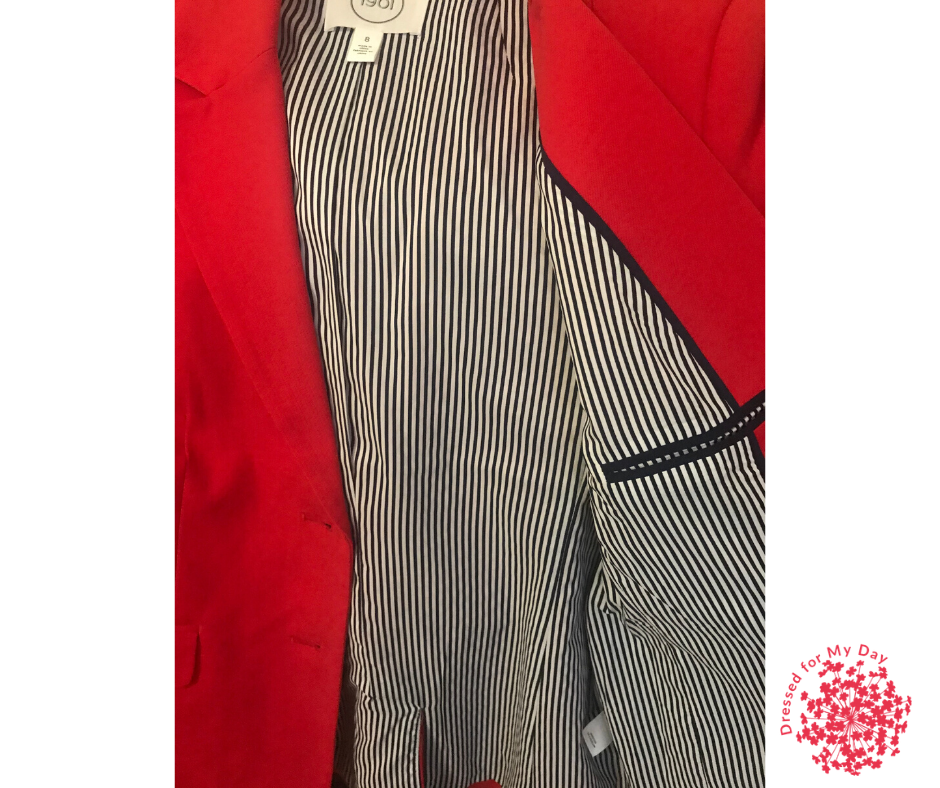
Unfortunately brands are not always consistent in these finishing touches. Most brands have more than one factory or supplier creating their clothing lines, so they may have beautifully finished dress pants but their t-shirts could be less polished. So be sure to check out each piece, even at your favorite stores.
Online Shopping Tip: Read product reviews for information about fit. Of course, not all shoppers look for the same things when purchasing garments, but I rely heavily on reviews that speak of tailoring, comfort and flattering construction.
Finesse
Similarly, I suggest you look carefully at the seams of the garments you’re consider purchasing. Seams should be serged neatly or hemmed in such a way as to conceal and protect all rough edges. Also ensure that the manufacturer sewed and finished off seams so that they lay flat and smooth.
A serged edge is actually the least elegant type of finished seam. It’s satisfactory, but if you pay more, expect more. When I sewed my daughter’s smocked dresses when she was little, I finished the side seams with what is known as a French seam. That meant that I completely encased the seam in another seam. There were no raw edges at all inside the garment. If I can use that kind of finesse sewing my little girl’s dresses, I should expect similar finesse from the clothing I pay good money for.
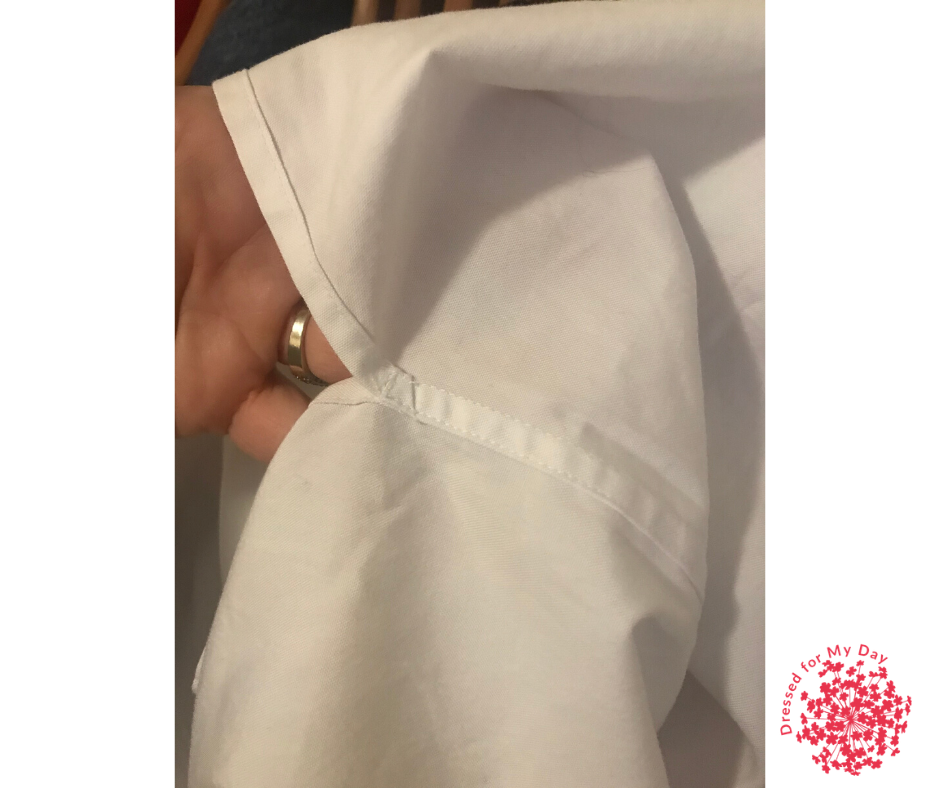
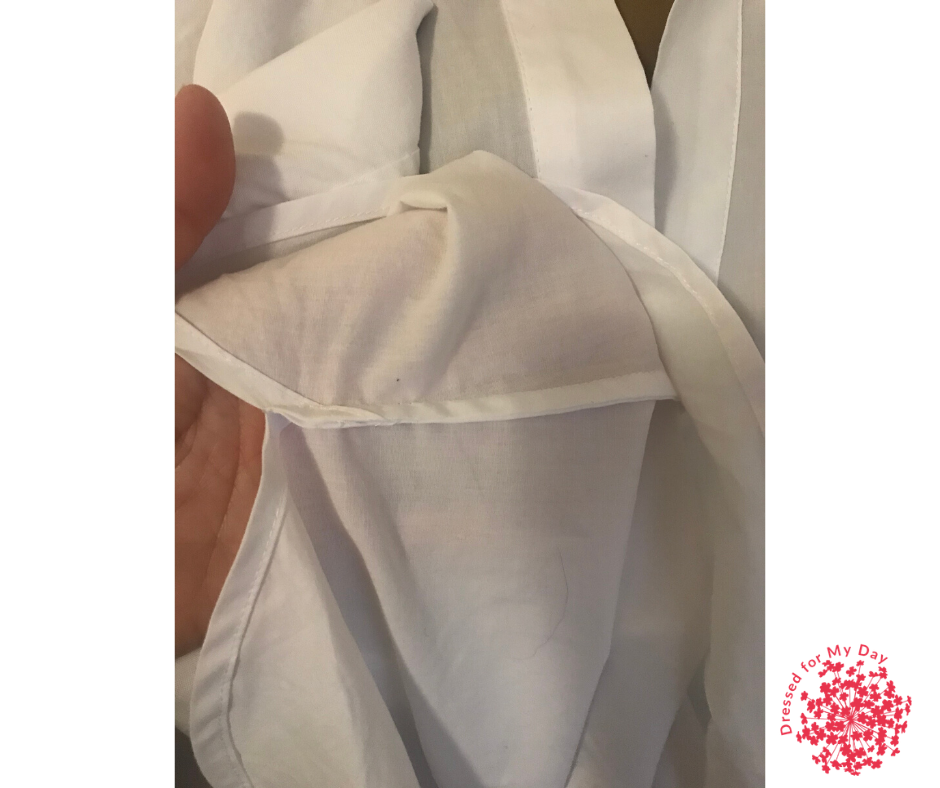

Interestingly, the three shirts pictured above are currently priced in direct opposition of their seam quality. All three are good shirts, and, obviously, I own them all. But you can see that price does not always reflect the finesse sewn into a product.
I also suggest you make sure that prints, stripes and plaids match up correctly at the seams of your garment. If they don’t, the manufacturer has “cut corners” by cutting out the pieces of the garment in a way that maximizes the use of their fabric rather than cutting out the pieces in a way that would create the most beautiful garment for you, the consumer.
Online Shopping Tip: Again, these are details that I hunt for in the “about” section of the garment listing as well as in the buyer reviews. Also, some retail websites include the option to ask questions about the garment or even chat with a style expert. Take advantage of those.
Fit
Obviously you should look for garments that fit you. But I contend that you also want to select garments that fit you in a way that creates a beautiful, feminine silhouette.
Look for garments that are tailored to your body. Check for darts in the bust area, tapering in the waist, room in the hips, adequate length in the sleeves, and linings that have a little give but also lay smooth.
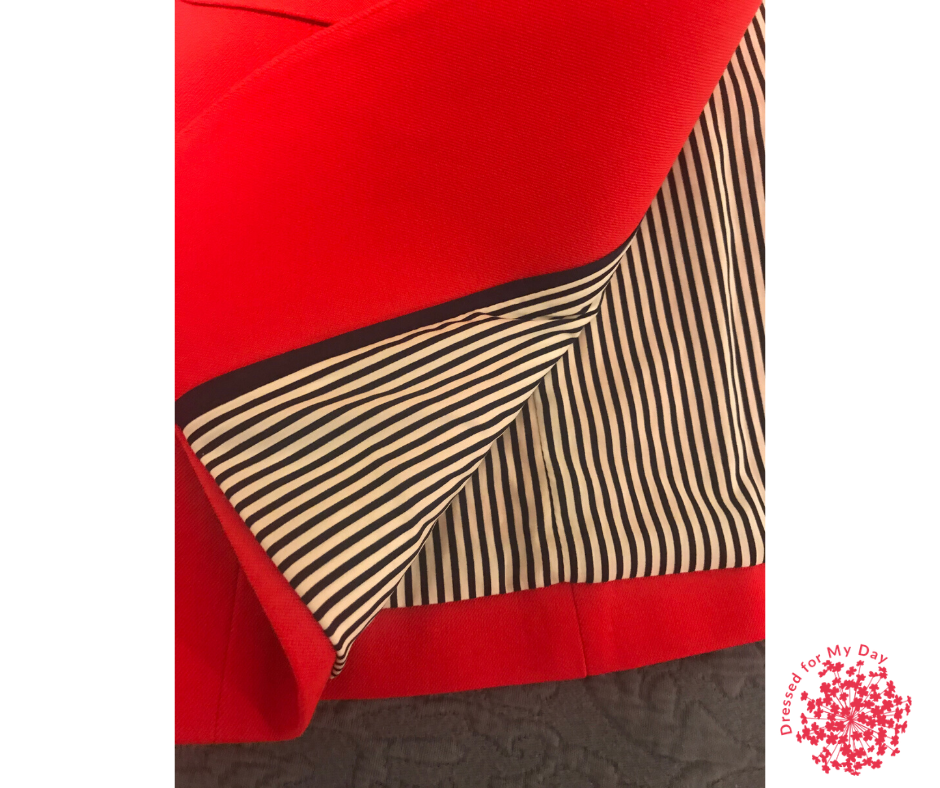
Also, the garment should be constructed so that you can get it on and off easily. Look for invisible zippers along the side seam, adequate room in the neck with button closures if needed and openings at the wrist with closures.
Yes, some articles of clothing are designed to have a boxy fit, but the garment should still look like it was meant to have a human body inside of it. Know what I mean?
Online Shopping Tip: This is where bloggers like myself come into the picture. Look for bloggers who give you the details about how an item fits and what is included or lacking in a garment that affects the fit and styling.
For more information on fit, you might want to read my post, 9 Signs Your Clothes Don’t Fit.
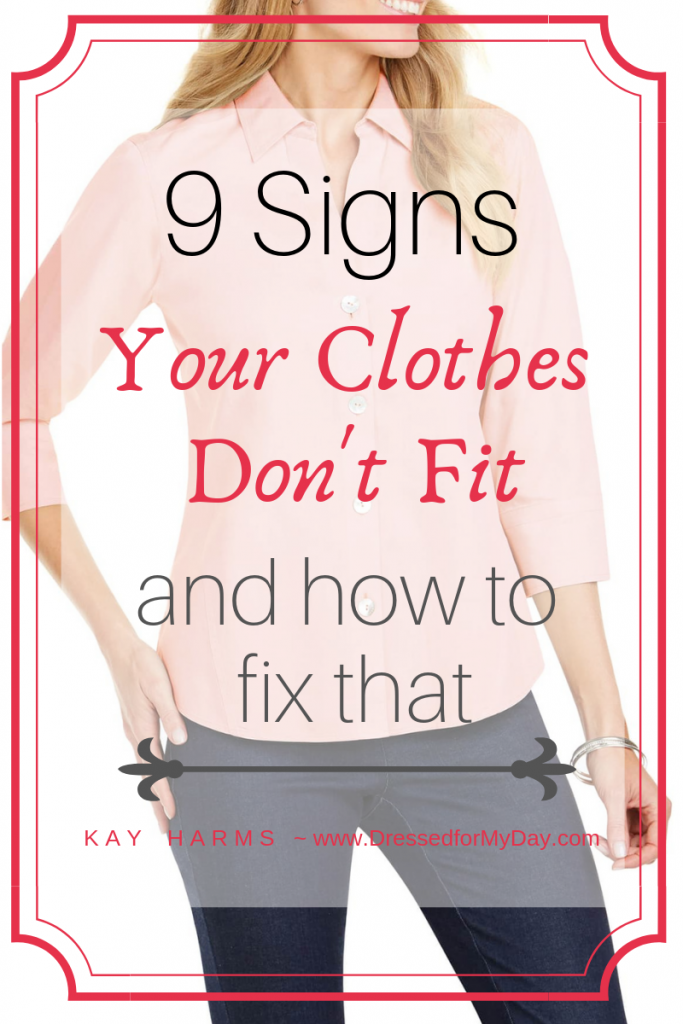
This post is part of my series, Moving Toward Slow Fashion. Curious about what we mean by slow fashion? You might want to check out my post, What is Slow Fashion.
If You’re Visiting from Pinterest…
I hope you’ll take a few moments to look around Dressed for My Day. You might want to…
- find out more about me here.
- check out my other fashion posts here.
- discover the answers to my frequently asked questions here.
- start with my home page here.
- take my What’s Your Style Essence quiz here.
- join the Dressed for My Day community here.
- follow me on Instagram, Facebook and Pinterest.
- visit my YouTube channel and subscribe to it.
Blessed for My Day
While I think it’s wise for every believer to be prepared to share their salvation story, it’s just as crucial that we be ready and able to share enthusiastically about what Christ has done in our lives recently. That’s where I story most easily connects with the people around us.
I find that many people are open to hearing about how God works in our lives when they are going through a navigating a change, grieving a loss, trying to make a big decision or wrestling with a relationship dilemma. Are you ready and prepared to share how Christ has helped you through any of those situations?
But sanctify Christ as Lord in your hearts, always being ready to make a defense to everyone who asks you to give an account for the hope that is in you, yet with gentleness and reverence. ~ 1 Peter 3:15

Great advice, especially about the seams ! Thanks Kay
You bet! I’m glad you enjoyed the post!
I’m loving that you writing about slow and sustainable fashion, I’m right behind you. It’s great getting ideas and what to look for in good quality.
Thanks, Dee
Great to hear, Dee. Thanks for reading and leaving a comment.
Thank you for the helpful information, particularly the explanations and examples of the different types of seams. I appreciate you and all the work you put into your blog.
You’re so welcome, Elizabeth. And I appreciate you gals for reading. Thanks so much for dropping in today!
Excellent advice, Kay. Thanks.
?
You bet, Suzanne. Thank you so much for reading today’s post.
Very helpful and informative post, Kay! If a garment is cheaply made, most of the time, it won’t fit us like it should. And I’ve learned to be cautious when ordering any garment from Amazon, and to make sure that it’s not from an Asian business, because their bodies are shaped nothing like ours. As I was reading it, my sewing days popped in my head. I hope that you’ve had a productive day!
Hi Ginger. Yes, memories of sewing came to my mind, too. I wasn’t always the neatest seamstress. But I do know what good seams should look like! Thanks so much for sharing.
Dear Kay,
Your insights are sure to help many of us make more informed purchasing decisions, and I appreciate the tips on what to watch for and seek out.
One detail I frequently see that disturbs me, and that I avoid, is unfinished, raw edges, when they appear to be a cost-cutting measure. I’ve seen this on merchandise even in quality stores, especially on sleeves but also on dresses or skirts where a hem should be. I think this may be a fast-fashion practice.
I also appreciate your comment that price and quality don’t always go hand in hand. That is so true, and it keeps us on our toes!
It does indeed keep us on our toes. I was really surprised when I took a look at the seams in those three different shirts this morning. I didn’t find what I had expected at all! Thanks for sharing!
Great solid advice Kay! Thank you. I enjoy all of your posts!